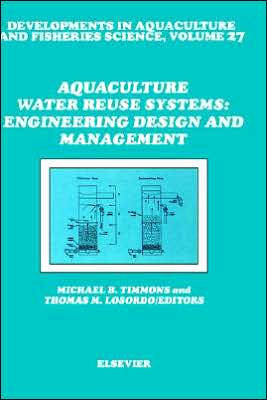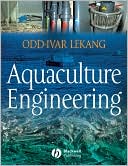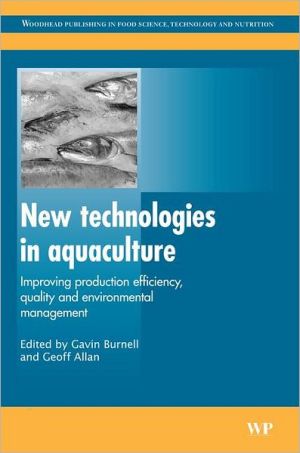Aquaculture Water Reuse Systems, Vol. 27
The demand for high quality aquacultured products and an increasing concern for resource conservation has led individuals and large corporations to invest time and money in commercial scale recirculating production systems. However, there are relatively few reports of profitable recirculating production systems in operation. There is little doubt that most fish reared in ponds, floating net pens, or raceways can be produced in commercial scale recirculating systems.\ The objective of this...
Search in google:
The demand for high quality aquacultured products and an increasing concern for resource conservation has led individuals and large corporations to invest time and money in commercial scale recirculating production systems. However, there are relatively few reports of profitable recirculating production systems in operation. There is little doubt that most fish reared in ponds, floating net pens, or raceways can be produced in commercial scale recirculating systems.The objective of this book is to provide basic information and analytical skills for the reader so that they may make the proper design or investment decisions concerning water reuse and recycle systems. The chapters of this book are sequenced to provide continuity to a basic approach that would be used in designing a water reuse or recycle system. The chapter authors contributing to this book have written extensively in the literature already on the particular subject being addressed in their chapter.Considerable background information on the basic processes being presented is also given in each chapter to supplement the basic design information being provided. These chapters should provide the reader with essentially all the information required in order to design and manage a water reuse system.The book is written for engineers and biologists working in the area of intensive fish culture. The text should also prove useful as a design manual for practising aquaculturists and as a resource of current "state-of-the-art" methodologies associated with water reuse systems. Booknews When the fishtank in your living room gets murky, you just change the water and scrub out the tank, but such an approach is expensive on the scale of a giant fish farm. For both economic reasons and to conserve resources, professionals have tried to clean and recirculate the water, so far without much success. Convinced that it should be possible however, engineers and biologists provide basic information and analytical skills to help make design and investment decisions about water reuse and recycling systems. The considerations include carrying capacity and flow estimates, suspended solids, nitrification, oxygenation, and pH. Annotation c. Book News, Inc., Portland, OR (booknews.com)
AcknowledgmentsList of ContributorsTable of Contents1.0An Introduction to Water Reuse Systems12.0System Carrying Capacity and Flow Estimation93.0Suspended Solids Control in Recirculating Aquaculture Systems614.0Nitrification Filter Principles1015.0Nitrification Filter Design Methods1276.0Aeration and Oxygenation1737.0Carbon Dioxide Control2098.0Control of pH in Closed Cycle Aquaculture Systems2359.0Use of Foam Fractionators In Aquaculture24710.0Operating and Managing Water Reuse Systems28111.0Monitoring and Control307Appendix325Subject Index329
\ From the PublisherThe book should provide the reader with essentially all the information required in order to design and manage a water reuse system.\ European Aquaculture Society By virtue of its subject matter, and comprehensiveness, this book merits serious consideration for inclusion in the libraries of either commercial producers or research aquaculturists.\ ...the practicality of the layout makes it a valuable reference text.\ Aquaculture\ \ \ \ \ \ \ BooknewsWhen the fishtank in your living room gets murky, you just change the water and scrub out the tank, but such an approach is expensive on the scale of a giant fish farm. For both economic reasons and to conserve resources, professionals have tried to clean and recirculate the water, so far without much success. Convinced that it should be possible however, engineers and biologists provide basic information and analytical skills to help make design and investment decisions about water reuse and recycling systems. The considerations include carrying capacity and flow estimates, suspended solids, nitrification, oxygenation, and pH. Annotation c. Book News, Inc., Portland, OR (booknews.com)\ \


